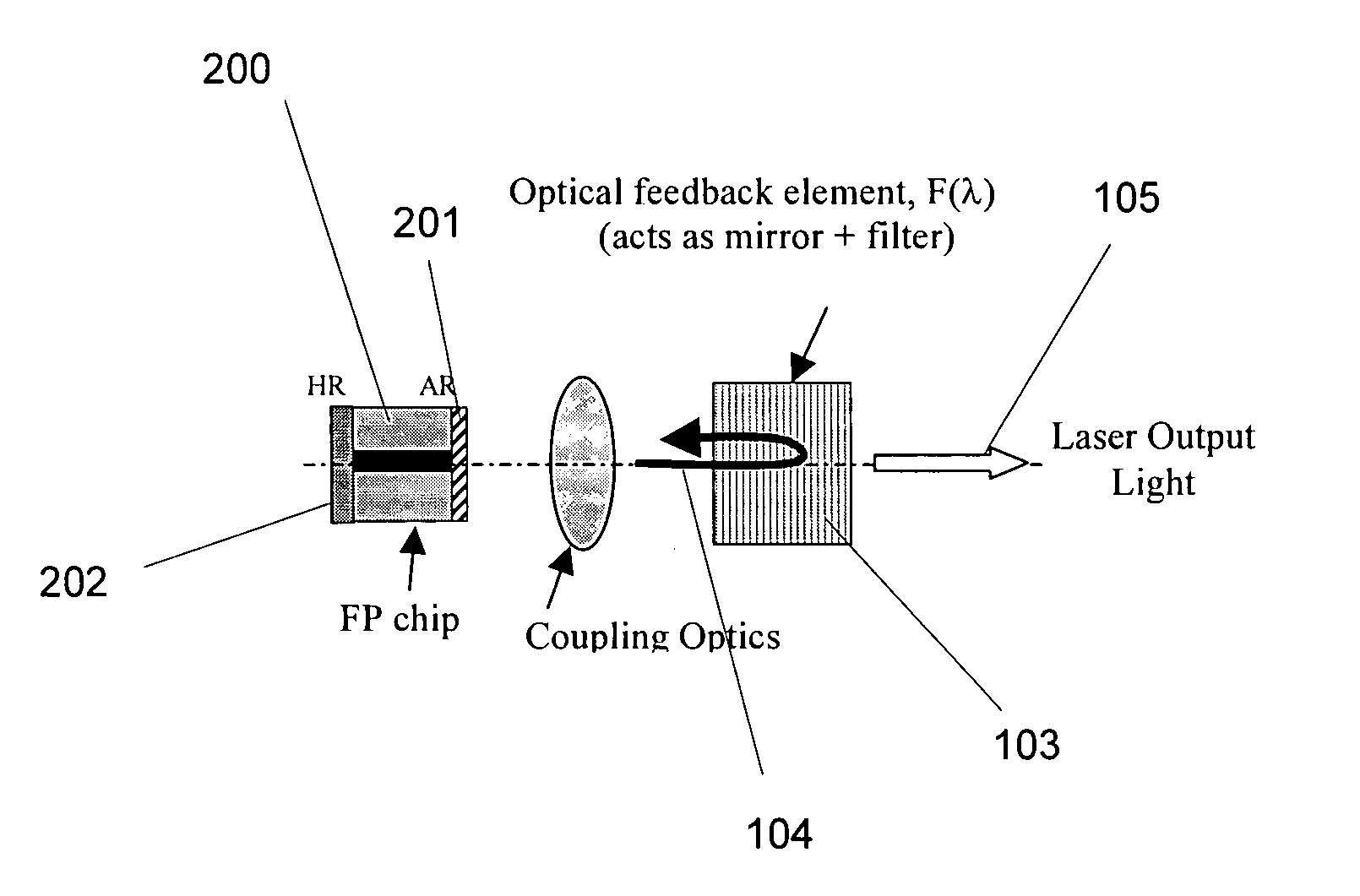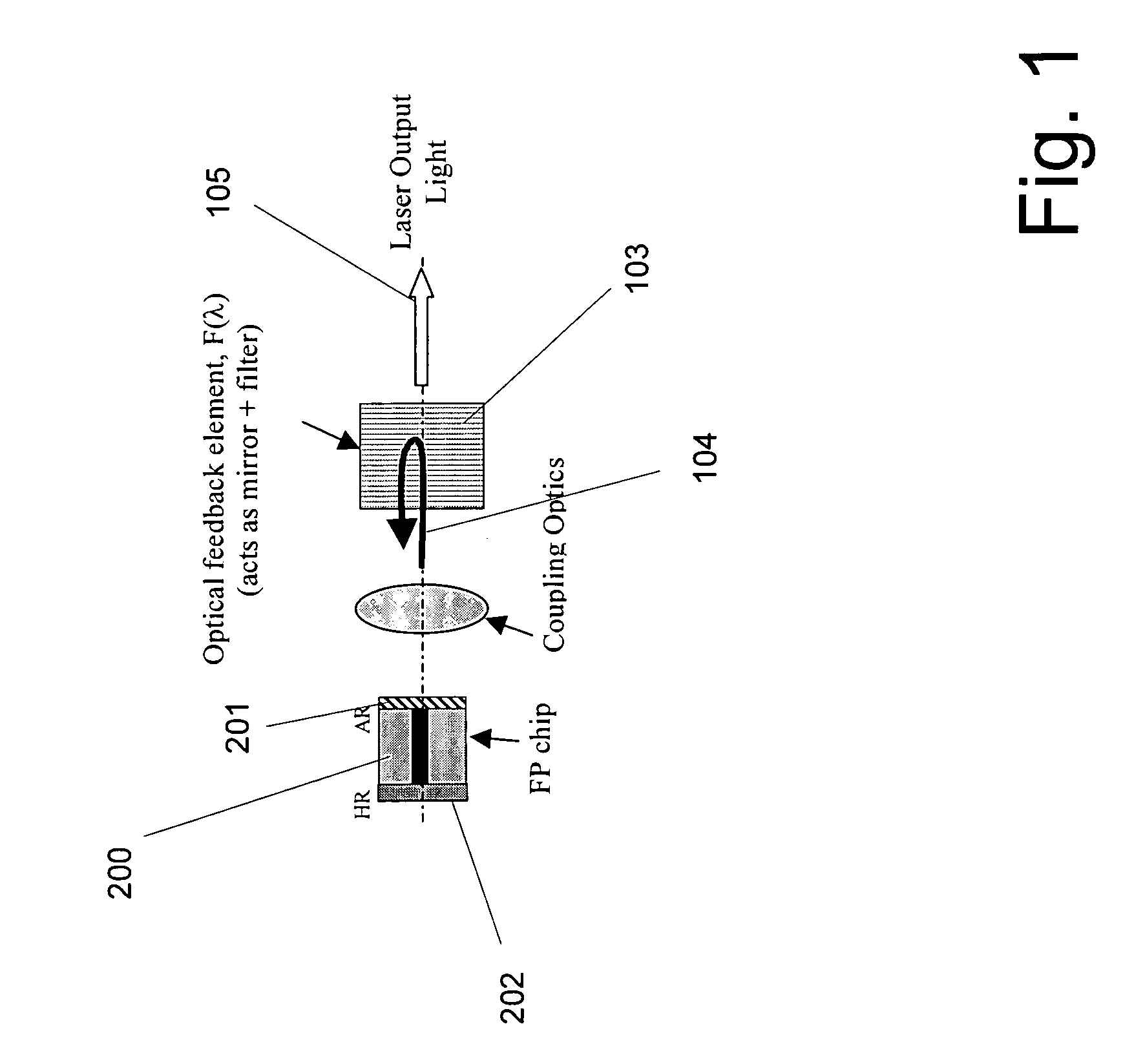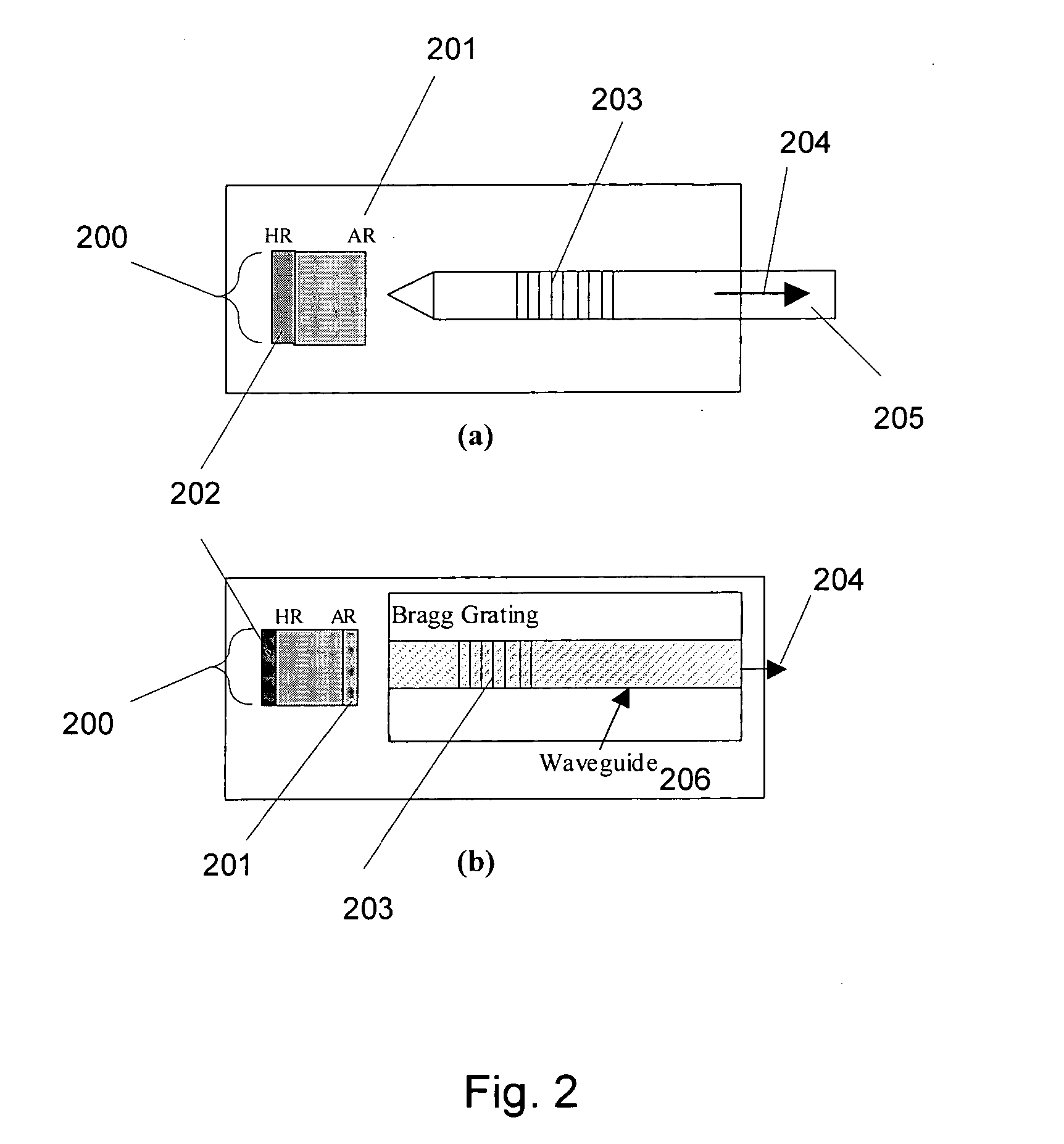Analog external cavity laser
a laser and external cavity technology, applied in the field of external cavity laser light sources, can solve the problems of reducing the transmission efficiency ratio of laser sources with narrower linewidth than typical dfbs, affecting the spread of catv and wireless distribution to 1550 nm networks, and affecting the transmission efficiency ratio of laser sources
- Summary
- Abstract
- Description
- Claims
- Application Information
AI Technical Summary
Benefits of technology
Problems solved by technology
Method used
Image
Examples
Embodiment Construction
[0046] After considering the following description, those skilled in the art will clearly realize that the teachings of the invention can be readily utilized for the design, fabrication, packaging and / or use of external cavity lasers (ECLs), particularly analog ECLs
[0047] The technologies described herein relate to analog external cavity lasers including techniques for designing, packaging and improving the performance of ECLs for use in analog and CATV fiber optic communications systems. This field of application is by way of example and not limitation since systems, techniques, processes, devices and materials described herein can find applications in other fields as well. The analog ECLs described herein are direct-modulated laser sources providing significant advantages compared with other devices and systems for analog optical transmission. These advantages include higher performance in terms of distortion and chirp (for example), at lower costs and with improved design margin...
PUM
 Login to View More
Login to View More Abstract
Description
Claims
Application Information
 Login to View More
Login to View More - R&D
- Intellectual Property
- Life Sciences
- Materials
- Tech Scout
- Unparalleled Data Quality
- Higher Quality Content
- 60% Fewer Hallucinations
Browse by: Latest US Patents, China's latest patents, Technical Efficacy Thesaurus, Application Domain, Technology Topic, Popular Technical Reports.
© 2025 PatSnap. All rights reserved.Legal|Privacy policy|Modern Slavery Act Transparency Statement|Sitemap|About US| Contact US: help@patsnap.com



